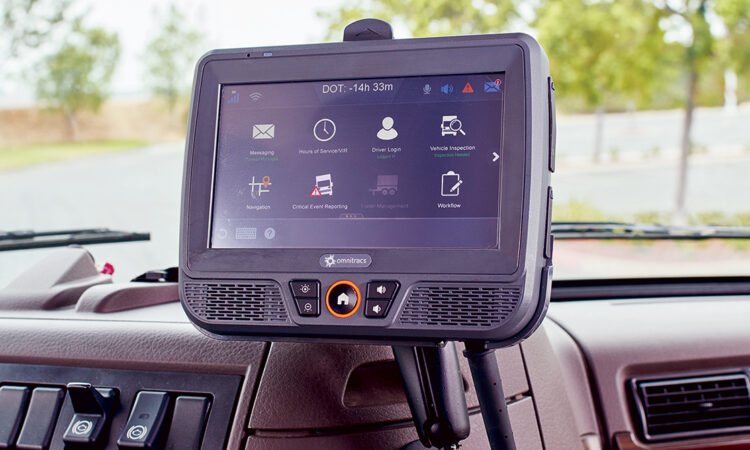New research and inspection data shows that electronic logging devices are largely on target to reach their goals of improving road safety and simplifying tracking hours of service, according to a technology expert.
“Research from the Department of Transportation shows that trucks equipped with ELDs have experienced a 53% lower driving-related hours-of-service violation rate in 2020, and a 49% lower nondriving-related hours of service violation rate,” Michael Ahart, vice president of regulatory affairs for software company Omnitracs, told American Trucking Associations’ Technology & Maintenance Council during its virtual spring meeting April 22.
Other violation data recorded during roadside inspections tells a positive story since the Federal Motor Carrier Safety Administration’s ELD regulation required nearly all motor carriers to install the devices on their trucks by Dec. 16, 2019, Ahart said.

Ahart
“What we’re seeing over time with ELDs is that hours-of-service specific time-related violations are decreasing,” Ahart said.
“For example, violations for driving more than eight hours without a 30-minute rest break in 2016 and 2017 were the fifth-most-cited violations during roadside inspections. When we look at 2020, with ELDs, this category has declined to the 25th position.”
Ahart added, “So drivers are recognizing the fact that they cannot use paper to ‘pencil whip’ their records.”
As for driving beyond the 14-hour daily window, the violation was rated No. 10 in 2016-2017, but declined to No. 23 in 2020.
“This means that there are less fatigued drivers on the road,” Ahart said.
Inspection data is also showing that ELDs are largely tamper-resistant.
False log violations, the eighth and ninth most cited in 2016-2017, have moved up to the fourth position in 2020. “We see this as an indication that the ELD is doing what it’s supposed to,” Ahart said.
He also referenced electronic record of duty status (eRODS), which is a software application designed by FMCSA to identify potential hours-of-service violations for safety officials to review.
He said that the rate of successful e-RODS transfers from driver to inspector increased to 92.4% for December 2020, compared with 88.6% since December 2017. “What we’re looking for is this number to increase,” he said.
Ahart said that FMCSA data also shows that the ELD mandate has resulted in a decrease in the percentage of drivers getting at least one hours-of-service violation during inspections.
“The other thing to know is that enforcement is doing more inspections because the e-RODS process enforcement can do more inspections over time because the older process on paper just took so much more time,” he said.
Another positive indicator is that the rate of false logs violations has increased “fairly steadily” between summer 2018 and spring 2020. “These are likely false logs that would have been more difficult to detect without ELD and e-RODS technology,” Ahart added.
Also during the briefing, Scott Stofer, director of safety and compliance for Orbcomm, gave an update on Canada’s new ELD rule, set to go into effect June 12.
The regulation will be applicable to U.S. truckers who cross over the border to do business in Canada, but will be largely harmonized with the U.S. ELD mandate, with some differences in hours-of-service requirements, Stofer said.
Those truckers operating within 160 kilometers, or 99.4 air miles, will be exempt from the Canadian ELD mandate. So will vehicles manufactured before 2000.
Stofer said the Canadian rule allows personal conveyance limited to 75km (46.6 miles) per day. For yard moves that exceed 20 mph, ELDs will be required to auto switch to drive. Malfunctioning ELDs will be required to be replaced within 14 days. In the U.S., replacements must be made within eight days.


